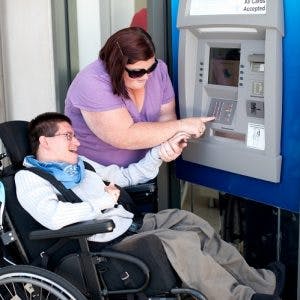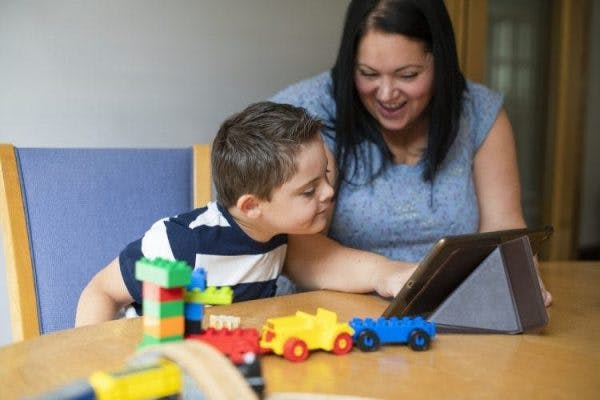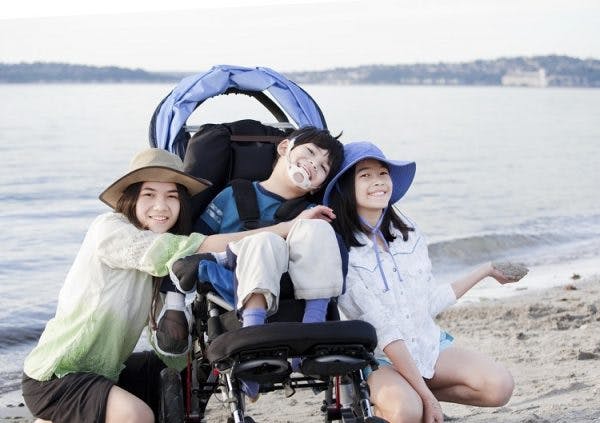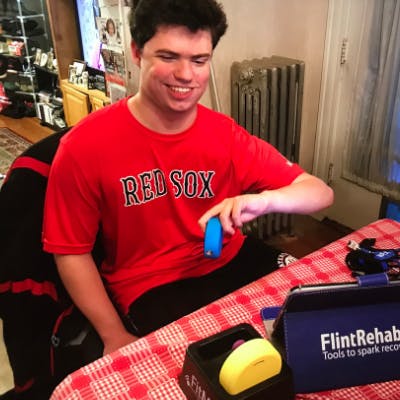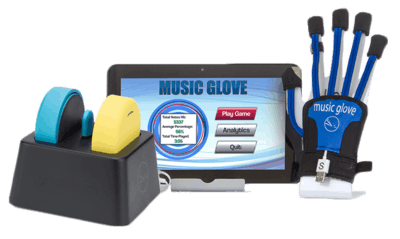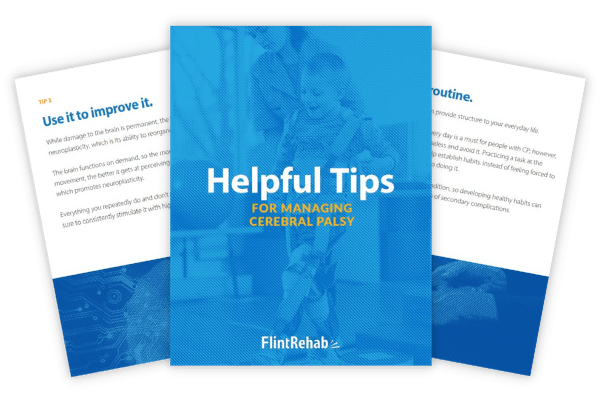Low or flaccid muscle tone (hypotonia) is a secondary effect of cerebral palsy that can make it challenging for individuals to perform a variety of movements and everyday functions. While it is much more common for individuals with cerebral palsy to experience high muscle tone than low muscle tone, it is also possible for individuals to experience a mix of both. With a personalized management plan, individuals with cerebral palsy can learn to effectively manage abnormal muscle tone and improve their functional abilities.
To help you understand flaccid muscle tone in individuals with cerebral palsy, this article will discuss:
What Causes Flaccid Muscle Tone in Individuals with Cerebral Palsy?
Cerebral palsy is a motor disability that affects a person’s movements. Our muscles create movement by contracting and relaxing. Individuals with flaccid muscle tone lack muscle tension at rest, which increases their risk of injury and makes it difficult to coordinate movements.
Abnormal (high or low) muscle tone is one of the most common effects of cerebral palsy. It is caused by damage to the areas of the developing brain responsible for regulating movement including the motor cortex, basal ganglia, thalamus, and cerebellum.
Depending on the location of brain damage, individuals may experience a wide range of secondary effects. Low muscle tone is most commonly associated with damage to the cerebellum that results in ataxic cerebral palsy. However, it can occur in individuals with spastic, dyskinetic, and mixed types of cerebral palsy as well.
Most children with flaccid muscle tone due to cerebral palsy will be diagnosed by the time they’re 6 months old. However, milder forms of hypotonia may go unnoticed until the child is older. The following section will discuss the various signs of flaccid muscle tone in individuals with cerebral palsy.
Signs of Flaccid Cerebral Palsy

Every case of cerebral palsy is unique. As a result, even individuals with the same type of CP may have completely different signs and symptoms.
Symptoms of flaccid cerebral palsy include:
- Limp or flaccid limbs
- Minimal or no neck control (head tilting to the side while sitting or inability to raise head when lying on stomach)
- Developmental delays
- Frequent falls and clumsiness
- Extreme flexibility
- Slow movements and reflexes
- A soft or weak voice
- Feeding difficulties
- Wide-based stance when walking, sitting, or standing
- Fatigue
While the brain damage that causes cerebral palsy will not worsen over time, secondary effects such as flaccidity can progress and significantly affect an individual’s quality of life. Therefore, proper management of abnormal muscle tone is essential for long-term functional independence.
Management of Flaccid Cerebral Palsy
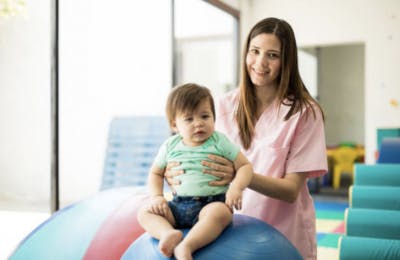
Early management of cerebral palsy and its secondary effects is crucial to maximizing your child’s mobility. In fact, many individuals with flaccid muscle tone are capable of building muscle tone and improving their overall mobility through repetitive, task-specific practice.
Improvements in muscle tone and mobility are possible because the brain is capable of utilizing neuroplasticity. Neuroplasticity refers to the central nervous system’s ability to make adaptive changes and reorganize its neural circuitry.
As a result, functions affected by brain damage, such as muscle tone, often have the potential to be rewired to unaffected regions of the brain and improved. Below, we’ll discuss several therapeutic interventions that can help individuals with flaccid muscle tone improve their functional abilities.
Physical Therapy
Physical therapy for flaccid muscle tone often consists of targeted exercises that build muscle strength and improve coordination.
Muscle tone refers to the amount of tension a muscle has at rest. In contrast, muscle strength helps you perform movements when the muscles aren’t at rest. By exercising to build strength, individuals with flaccid muscle tone may improve the speed and coordination of their movements.
The more you practice targeted exercises, the better the brain gets at perceiving demand for functions that utilize that muscle. Consequently, the repetitive stimulation will help promote adaptive changes in the brain and help strengthen the new connections. Continuing to practice physical therapy exercises at home can even further promote neuroplasticity and improvements.
Occupational Therapy
Occupational therapy for flaccid muscle tone generally focuses on improving an individual’s functional independence by practicing everyday activities such as eating, grooming, and dressing. Working on functional tasks teaches individuals with cerebral palsy how to be independent at home and promotes active movement.
Depending on the severity of the individual’s hypotonia, an occupational therapist may also teach your child how to use adaptive equipment or recommend positioning devices and strategies to increase functional independence.
Speech Therapy
Flaccidity can affect muscle tone throughout the entire body, including the muscles around the mouth. To manage speaking or feeding difficulties, individuals with hypotonia may benefit from treatments with a speech-language pathologist.
During speech therapy, individuals with flaccidity may practice activities focused on strengthening the oral motor muscles so that they can eat and/or communicate more effectively.
Additionally, those with severe oral motor impairments that are unable to produce speech may learn to use alternative forms of communication such as tablets or voice generators. Speech therapists may also recommend softer diet textures or thickened liquids if needed.
Orthotic Devices
Because children are constantly growing, poor posture caused by flaccid muscle tone in the trunk may affect the way the body develops. This can cause distorted growth, scoliosis, and pain.
Wearing orthotic devices such as braces or casts promotes proper body alignment and form. For example, a trunk brace can help prevent slouching caused by weak core muscles and promote better upright sitting balance. Similarly, if a child has more severe cerebral palsy and needs to use a wheelchair, lateral supports or a contoured backrest may also encourage better posture.
While orthotic devices won’t change flaccid muscle tone, they provide the structural support necessary to reduce injuries and promote proper musculoskeletal alignment.
Caring for a Child with Flaccid Cerebral Palsy

Now that you understand what flaccid muscle tone is and how to manage it, here are some tips to consider when caring for a child with hypotonia:
- Before lifting your child, always make sure that one hand is supporting the back of their head to prevent neck injury.
- Avoid lifting your child by their arms or legs because children with low muscle tone are more likely to dislocate a joint.
- Select clothes that are comfortable, easy to put on, don’t restrict movement, and won’t get caught on nearby objects.
- Encourage your child to perform activities of daily living independently (or as independently as developmentally appropriate) and only assist them when they ask for it to promote active movement and body awareness.
- Be patient. Because children with flaccid muscle tone struggle to coordinate their movements, they’ll likely need more time to carry out tasks and activities.
With the right care and enough practice, individuals with hypotonia can learn to significantly improve their mobility and overall quality of life.
Flaccid Cerebral Palsy: Key Points
Flaccid muscle tone can make it challenging for individuals with cerebral palsy to maintain their balance and coordinate movements. With a personalized management program that targets their specific weaknesses, individuals can improve their muscle tone. Additionally, there are effective ways to compensate for low muscle tone such as learning how to use adaptive tools and alternative forms of communication.
We hope this article helped you gain a better understanding of flaccidity in individuals with cerebral palsy and how to manage it.






